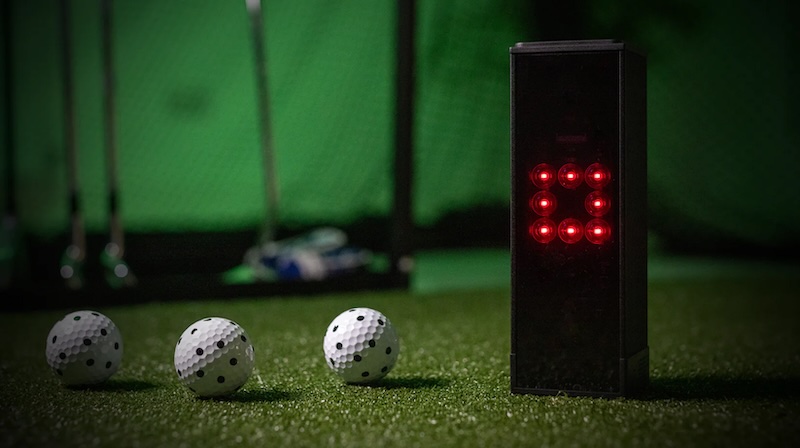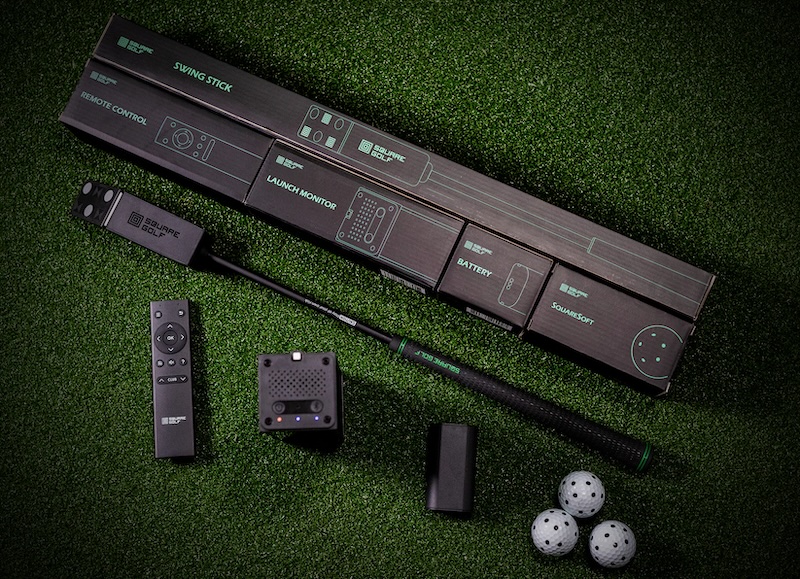
No More Off-Season: Building a Garage Golf Simulator - Part 2: Launch Monitor and Software
Welcome back to my DIY golf simulator journey!. In Part 1, I talked about measuring my space and figuring out the basics of my simulator setup. Now it’s time to choose the heart of the system: the launch monitor. This is the technological brain that translates a physical golf swing into a virtual shot. Making the wrong choice here could mean inaccurate data, endless frustration, or a system that just doesn’t work in my space.
My Shortlist
I started by comparing some of the most popular options using these criteria:
- Space Requirements – The deal-breaker for my narrow setup.
- Left/Right-Hand Support – Ideally without physically moving the monitor.
- Cost – Definitely cannot break the bank.
- Software Compatibility – Flexibility to try different virtual courses but best without paid subscriptions.
- Club Face Data Accuracy – Nice to have real measurements, not estimates.
Before diving into specs, let me talk briefly about the core technology, because my garage 10’ width immediately splits the field in half.
- Radar (Doppler) Units: These sit behind the golfer (R10, MLM2PRO, Mevo+). They need a clear view of the ball traveling forward. In a narrow space, I have to use an “offset” hitting position (not centered) to have enough room to swing. This can make it difficult for a radar unit to get a perfectly straight-on view, potentially affecting accuracy. They also require more room depth to track the ball.
- Photometric (Camera) Units: These sit to the side of the golfer (Square Golf, SkyTrak+, Bushnell LP) or are mounted to the ceiling (Uneekor). They don’t care where I stand in the room, as long as they are positioned correctly next to the ball. This makes them ideal for my offset setup and for spaces with less depth.
Stage 1 Elimination: Why Radar is a No-Go
My first decision was easy. I have eliminated all radar-based launch monitors from consideration. This includes popular units like the Garmin R10, Rapsodo MLM2PRO, and FlightScope Mevo+.
The reason is simple: Radar units need to sit directly behind the ball to work accurately. In my narrow 10’-wide garage, I must use a dual “offset” hitting position (not centered) to have enough room to swing a driver. The radar units seem to work best when centered and although there is some support for offset, there is absolutely no support that I could find for dual offset to accomodate both lefties and righties. In my opinion this is a huge missed opportunity as I really liked the Mevo+ as far as overall package.
Stage 2 Elimination: The “Dream vs. Reality” Check
With my search narrowed to camera systems, I looked at the absolute best solution for my space: an overhead launch monitor.
Units like the Uneekor EYE MINI (which can be floor-based or overhead) and the Uneekor QED or EYE XO are the “dream setup” for a space like mine. They mount to the ceiling, perfectly out of the way. Their biggest advantage is that they provide seamless support for both right- and left-handed players. There’s no need to move any equipment; friends can switch from righty to lefty on the fly. This was a huge selling point for me.
So why aren’t I buying one? In a word: cost.
These professional-grade overhead systems start at around $4,500 and go up to $10,000 and beyond. As amazing as they are, a $5,000+ price tag for the launch monitor alone is outside the budget for my value-focused DIY build. So, with a heavy heart, I had to set the “dream setup” aside. This project is about creating the best possible experience for a realistic price.
This left me with a final showdown between the three most compelling side-placed camera units on the market.
The Final Contenders:
- The Budget Disruptor: Square Golf
- The Established All-Rounder: SkyTrak+
- The Professional-Grade Benchmark: Bushnell Launch Pro
The Final Showdown: Head-to-Head Comparison
Each of these units sits beside the golfer, making them a great fit for my space. Now it’s a battle of performance, features, and the total cost of ownership.
| Feature | Square Golf | SkyTrak+ | Bushnell Launch Pro |
|---|---|---|---|
| Technology | Photometric (Camera) | Photometric + Doppler | Photometric (Camera) |
| Price (Hardware) | ~$699 | ~$2,995 | ~$1,999 (Ball Data Only) |
| Placement | Side of Ball | Side of Ball | Side of Ball |
| L/R Handed Play | Requires moving unit | Requires moving unit | Requires moving unit |
| Measured Club Data | Yes (Path, Face, AoA) | Yes | Requires Gold Sub |
| Data Quality | Great for the price | Excellent All-Around | Tour-Level Ball Data |
| Subscription Cost | None | $129-$249/year | $249-$699/year |
| GSPro Compatible | Yes (No extra fee) | Yes (with sub) | Yes (with Gold Sub) |
| Total 3-Year Cost | ~$699 | ~$3,742 (with Game Play sub) | ~$4,096 (with Gold sub) |
Breaking It Down: What Really Matters?
With the “perfect” overhead solution off the table, my decision comes down to which compromises I’m willing to make with a floor unit.
Data Quality & Accuracy
All three provide the measured data I want, but to varying degrees of precision.
- Bushnell Launch Pro: The king of raw ball data accuracy. It’s as close to tour-level as you can get, but you have to pay a premium subscription to unlock its club data capabilities.
- SkyTrak+: A powerful all-around performer with excellent accuracy on both ball and club data right out of the box.
- Square Golf: The value champion. It provides the essential measured club data I want, and while it might not be as precise as the other two, it’s a massive leap over any estimated data.
My Take: The data from all three is excellent for my needs. The extra precision of the premium units is nice, but I question if it’s worth a 5x to 6x increase in long-term cost.
The Real Cost: Software & Subscriptions
This is where the choice becomes crystal clear. My goal is to play GSPro software without being chained to expensive annual fees just to connect.
- Bushnell Launch Pro & SkyTrak+: These are built on the subscription model. To get the features I want and connect to GSPro, I’d be paying hundreds of dollars every year, forever. Over just a few years, the cost of the software subscription would be more than the entire price of the Square Golf unit.
- Square Golf: The hero of the DIY builder. It has a policy of no extra fees to connect to GSPro. The price on the box is the real price to get up and running with the best community software. I can also go and buy Awesome Golf for couple hundred bucks and play for quite a while before I even get a GSPro subscription.
My Take: This isn’t just a feature; it’s a philosophy. The Square Golf model respects the customer, while the others feel designed to maximize recurring revenue.
The Final Decision
My decision-making funnel was clear:
- Space limitations eliminated all radar units.
- Budget limitations eliminated the “dream” overhead units.
- This left a three-way battle of floor units, where the long-term cost became the deciding factor.
My Decision: I ordered the Square Golf launch monitor.

After considering the absolute best-case scenario (an overhead unit) and ruling it out on price, the choice became easy. The Square Golf provides the essential features of the far more expensive camera units — a side placement perfect for my space and measured club data for real game improvement — but it does so without the punitive subscription model.
The ability to connect to GSPro for free makes the total cost of ownership incredibly low and aligns perfectly with the spirit of a DIY project. I will have to live with the minor inconvenience of moving the unit for my righty friends, but that is a tiny price to pay to save literally thousands of dollars over the next few years. That savings is what will allow me to build a truly awesome simulator enclosure without breaking the bank.
What’s Next?
With the brains of my operation chosen after a long and thorough search, it’s time to build its home. In Part 3: Asembling the enclosure, I’ll take you through the entire process of designing and building the enclosure—from constructing the frame to selecting the perfect impact screen.